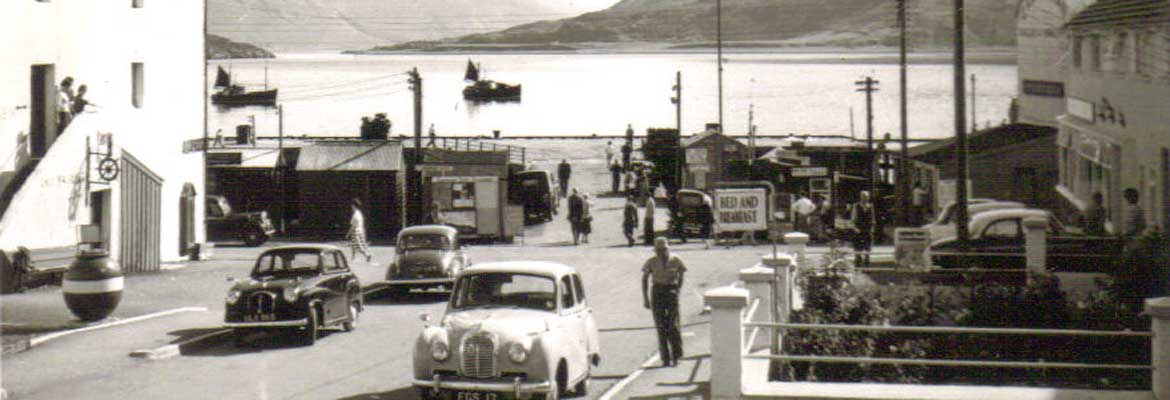Two soapstone bowls were dug up by road builders who were working at Braemore twelve miles from Ullapool in the 1950s. A third was found even closer to Ullapool on the isle of Tanera and can now be seen at Ullapool Museum. These belonged to Viking settlers who, some believe, first gave Ullapool its name. (Ullapool means Ulla’s steading) Whoever Ulla was, he and his fellow Scandinavians were not the first settlers here. There are archaeological remains of settlements dating back to the Bronze Age and the remains of several Iron Age forts such as the one at Dun Canna a few miles north of Ullapool. These sites can be interesting places to visit. Even when all that is left of the early buildings is a pile of stones the sites the ancients chose to settle on have retained a beauty and atmosphere which is enhanced by their proximity to fresh water and fertile fishing grounds.
Before Ullapool was declared a fishing port by the British Fisheries Society in 1788 it had been home to fishermen for centuries. Whilst the fishing industry suffered periodic declines over the years it experienced a boom period during the Second World War. The waters to the east coast of Scotland became too dangerous to fish because of the threat of enemy mines. After the war, as modern technology improved catching techniques and thousands of tons of herring were landed, expansion was required and Ullapool Harbour was doubled in size to cope with the large number of working boats.
The late 1960s and early 1970s were the beginning of the phenomena of large Scandinavian factory ships known as klondykers which came to fish for herring. They landed their catch and sent it off for processing on the east coast. These ships then delivered the fish to Norway, Africa and the Canary Islands. They often returned with cargoes of fruit.
When the Eastern block ships appeared things changed. They were interested in fishing for mackerel which they then processed on board. Sometimes they were joined by Irish, Nigerian, French and Japanese vessels. At one time there were up to 70 klondykers in the bay and a further extension of the harbour was required. Meantime the foreign crews enthusiastically purchased any luxury goods they could not get in their own countries from Ullapool shops. There was trade and even some marriages between the two communities. Following the collapse of eastern economies the price for mackerel went down and the factory ships left.
These days the harbour’s main customer is Caledonian MacBrayne who run a daily passenger and car ferry service from Ullapool to Stornoway and an overnight freight ferry service on the same route.
The harbour has supported the fish farm industry for many years, initially with the transfer of feedstuffs and more recently with the transshipping of live salmon smolts from shore sites via purpose built tank ships to west coast sea farms.
The harbour supports a local inshore shellfish fleet of prawn creel and trawl fishermen all year round, combined with seasonal landings of crabs, lobsters and scallops. Whitefish landings come in bursts following the seasonal occurrence of haddock and squid at Rockall for the Scottish trawl fleet, and hake and monkfish for the Spanish liner/netter fleet. In 2008 the harbour handled approx £12 million in combined fish and shellfish landings with 110,000 boxes of whitefish being consigned to the east coats markets. 2009 saw the welcome return of a lone klondyker who processed and froze 9000 tonnes of blue whiting for export to the Far East. Ullapool Harbour Trust is committed to maintaining a strong foothold in fishing and will continually try to source new fisheries and fleets to service in order to maintain and continue the proud 220 year heritage of fishing that Ullapool has enjoyed.
©2012 Ullapool Harbour. All Rights Reserved.
